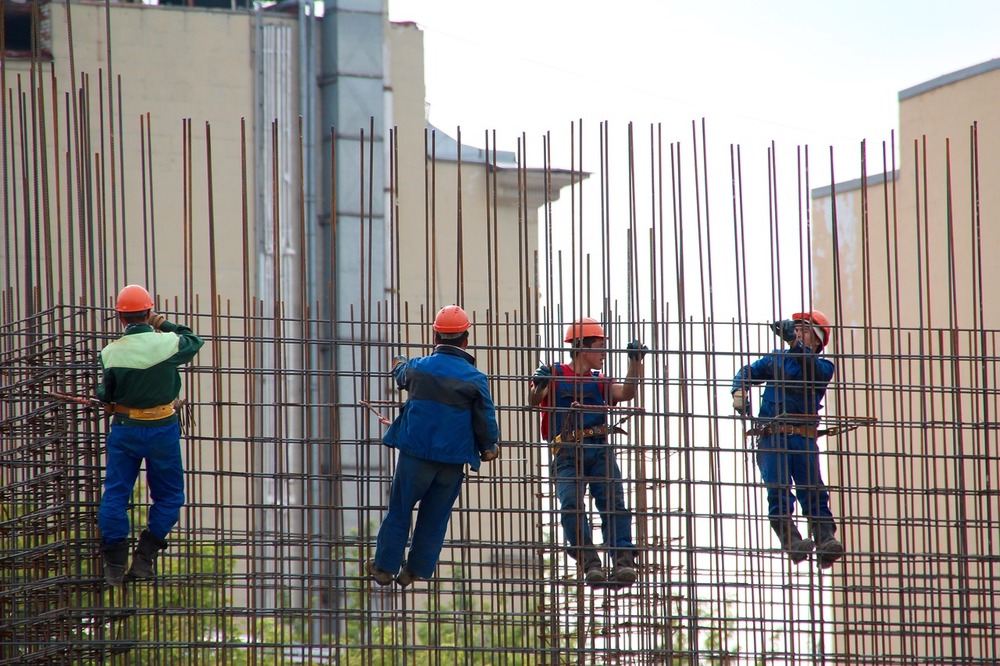This article is part of a blog series on the labor shortage in the construction industry. To overcome the labor shortage, the industry will have to automate its processes and use various technologies to boost efficiency, strengthen employee retention, attract the younger generation, and make recruitment attractive by offering competitive wages and benefits.
The labor crisis in the construction industry is a worldwide issue that affects the companies and workers. The contributing factors are an aging workforce retiring, the younger generation not being attracted by the industry, as it has a bad feeling of being dirty and dangerous, and people leaving the industry during the COVID pandemic. The Great Resignation after COVID-19 also affected the labor shortages in the sector. Workers across every sector reevaluated their careers. Some associated the trades with difficult construction worker conditions, manual labor, or lower wages. This combination affected the labor supply, especially for small businesses dependent on local workers.
After COVID-19, many workers across every sector reevaluated their careers. Some associated the trades with difficult construction worker conditions, manual labor, or lower wages. This combination affected the labor supply, especially for small businesses dependent on local workers.
As a result, it is difficult to find people with the right skills, to join the industry, increasing the risk of project delays and missing budget targets.
## What is the crisis about?

The construction industry is economically vibrant. Unfortunately, recruiting new people is seriously difficult, as finding skilled construction workers, to meet the growing demand is almost impossible. In the US alone, the construction industry needs to hire 439,000 net new workers in 2025 to meet the growth demand for construction services, according to the Associated Builders and Contractors. The Home Building Institute (HBI) report talks about 723,000 workers needed per year. This gives you an idea of the severity of the crisis.
As already mentioned, current workers are retiring, and not enough people can replace them. Retirement will not stop soon, as 41% of the workforce will be gone by 2031. The same report says it takes 11 years to train someone to have the same level of skills as the people they will need to replace. This is exasperated by the fact that existing vacancies and projected new job openings must be filled to meet the planned project requirements.
These categories range from entry-level construction workers to supervisors, senior project managers, and tradesmen. Additionally, construction firms need trade contractors for specific tasks. The
The Great Resignation also played a significant role in the labor shortages.
After COVID-19, people from various industries left their companies to move into greener pastures. This also happens in high-tech industries, like aerospace. Constriction experienced prolonged delays and project cancellations due to a lack of labor. This added to the construction economy decline. The lack of skilled staff created difficulties across all categories of projects, housing, commercial, and infrastructure large and small.
The major factors affecting the industry are project delays and increased materials prices. Leading clients to cancel or delay their funding for existing and future projects without consideration. To make the issue even worse, apprenticeship programs to bring new talent into the construction sector were canceled.
Even complex, large projects suffered, as general contractors could not find the required skilled workforce.
The lack of skilled workers forces contractors to overcome challenges and mitigate risks to prevent projects from being late and costing more. They must enhance quality control and increase productivity, or they can experience costly reworks.
Labor shortages are demanding, in the construction workforce. It does exhaust the staff and leads them to take dangerous shortcuts, which can create accidents, affecting safety on the job sites.
The 2022 Travelers Injury Impact Report surveyed 1.5 million claims filed between 2015 and 2019. It is shown that 35% of injuries happened in the first year of employment for all categories of employees. The primary cause of first-year injuries was overexertion, accounting for 27% of all claims.

As mentioned above, the main factors to mitigate are missed deadlines, increasing costs, and exhausted resources.
With fewer workers, people must rush to meet deadlines. This leads to mediocre quality, impacting costs and delays on all construction projects.
Training is affected as it takes time to fill gaps in the workforce, exposing laborers to safety risks. The labor force in construction trades is reducing, intensifying the issue. Construction companies must implement professional development and effective apprenticeship programs to mitigate the risk.
By combining various solutions, such as providing the right pay and benefits, to grow and develop a durable labor market. Investing in education and innovative technology may improve efficiency and safety on construction sites, compensating for the labor shortage.
Apprenticeships, vocational programs, and on-the-job training provide the workforce with skills, rewarding careers, and long-term employment perspectives to meet the industry’s growth for skilled labor requirements.
Offering minimum wages is insufficient to attract and retain people in the construction industry. People work for their employers because they need to finance their lives outside work, not because they like working. Offering life/work balance health insurance, retirement plans, educational opportunities, and paid leave helps entice and keep people in the construction industry.
The industry is demanding and one of the most dangerous ones to work for. Keeping employees safe, healthy, and mentally well is crucial. Demonstrating to your workforce that you care for them and that their contributions and commitment are valued will boost the morale and employees' well-being, preventing them from looking for a job somewhere else.
Through technology, you can meet the growth demand and mitigate the risk of labor shortages. Integrating AI into management processes, cloud-based project platforms, digital communications apps, and robotics systems increases efficiency. Automating all processes may cut repetitive or dangerous activities, improving on-site safety.
Prefabrication and modular systems can reduce delays and costs. They boost team morale, help enhance safety and drop repetitive, dangerous, and mundane tasks people do not like doing. Workplace, in modular construction, is welcoming as it is not exposed to weather conditions, reducing the need for everyday hiring practices.

The labor shortage is a significant problem in the construction industry, creating delays, cost overruns, and safety's hazards on projects.
Strategic solutions such as training, innovative recruitment techniques, improving working conditions, enhancing safety, and modern technology usage can build a more sustainable workforce.
Valuing your labor contributions to the required change, in new ways of thinking and working, and proving care and gratitude increase efficiency, helping mitigate the long-term effects of the labor shortage.
The labor skills shortage factors affecting the construction industry are that experienced workers retire, and not enough people from the younger generation enter the industry. During the Great Resignation, following the COVID-19 pandemic, many workers reevaluated their careers, aggravating the issue.
Driving Vision's Business Understanding diagnostic evaluates your BIM capabilities, if your culture is compatible with the BIM philosophy, and the investment needed to make you, BIM Level 3 ready.
The Business understanding appraisal report will evaluate your BIM capabilities, if your culture is compatible with the BIM philosophy, and the investment needed to make you BIM Level 3 ready.
Implementing BIM can be daunting, but Driving Vision is here to help you at the pace you are comfortable with. Get started by getting in touch now
You minimise the level of investment required to implement BIM as we share the Research and Development costs with other client
You increase your revenue by staying ahead of the competition as BIM best practices allows you to win bigger and more rewarding projects.
You reduce your costs, more than our fees cost you, by decreasing potential litigations, rework, and errors and omissions
